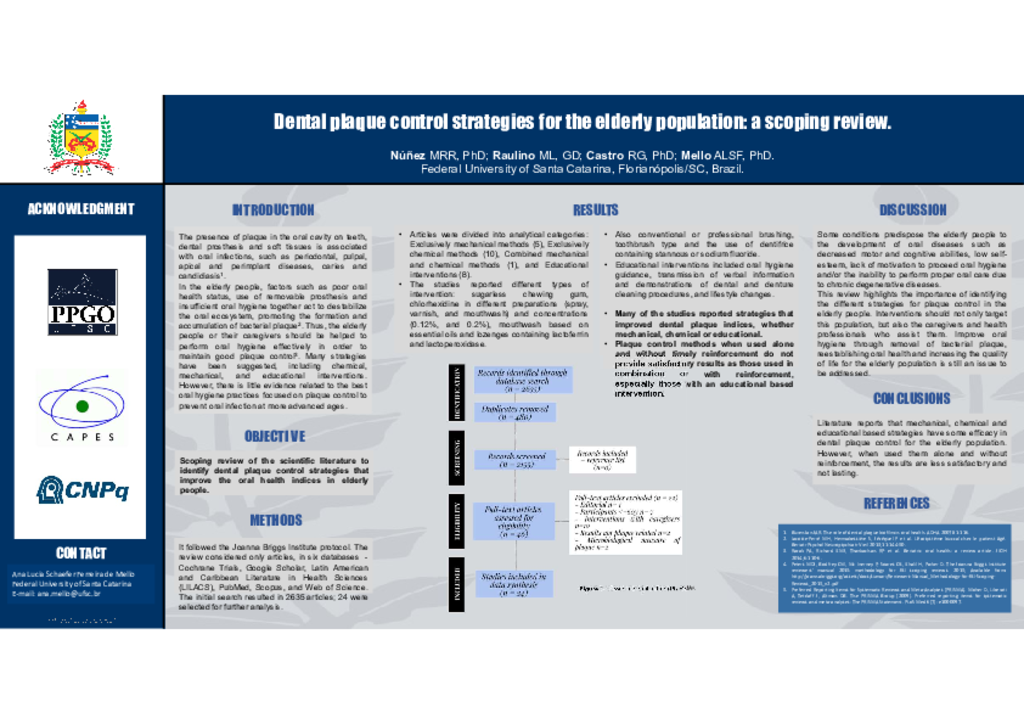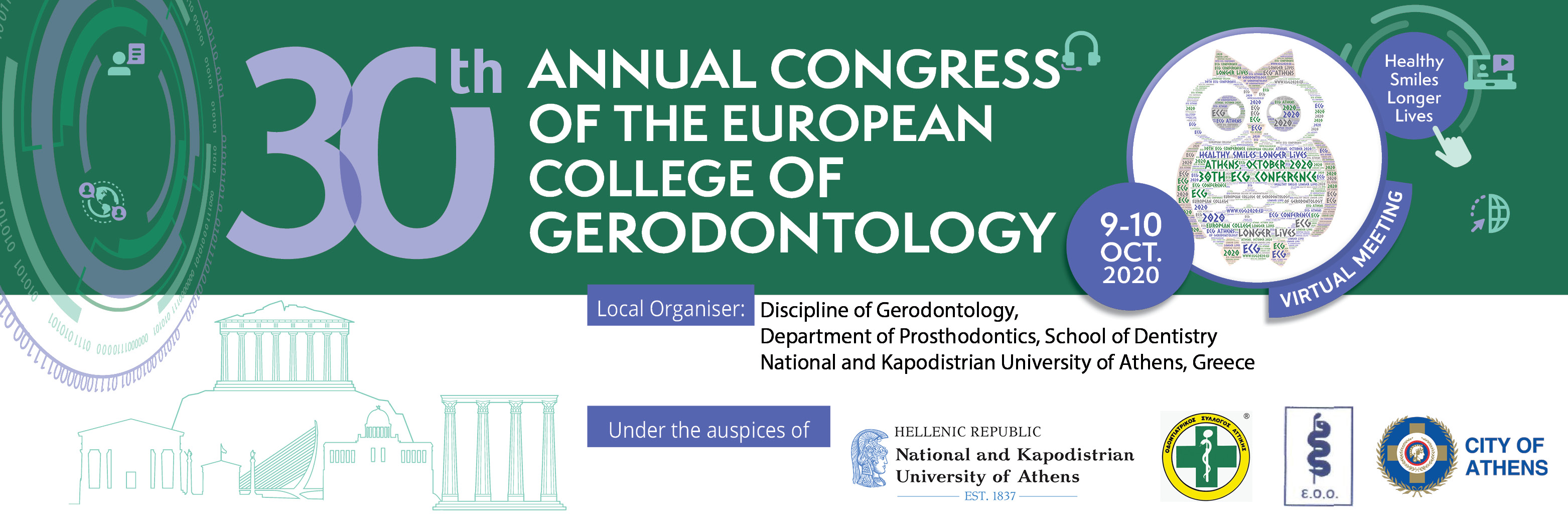Objective: Scoping review of the scientific literature to identify dental plaque control strategies that improve the oral health indices in elderly people. Method: It followed the Joanna Briggs Institute protocol. The review considered only articles, in six databases. The initial search resulted in 2635 articles; 24 were selected for further analysis. Results: The results extracted from the included articles were divided into analytical categories: Exclusively mechanical methods (5), Exclusively chemical methods (10), Combined mechanical and chemical methods (1), and Educational interventions (8). The studies reported different types of intervention: sugarless chewing gum, chlorhexidine in different preparations (spray, varnish, and mouthwash) and concentrations (0.12%, and 0.2%), mouthwash based on essential oils and lozenges containing lactoferrin and lactoperoxidase. Also conventional or professional brushing, toothbrush type and the use of dentifrice containing stannous or sodium fluoride. Educational interventions included oral hygiene guidance, transmission of verbal information and demonstrations of dental and denture cleaning procedures, and lifestyle changes. Many of the studies reported strategies that improved dental plaque indices, whether mechanical, chemical or educational. Plaque control methods when used alone and without timely reinforcement do not provide satisfactory results as those used in combination or with reinforcement, especially those with an educational based intervention. Conclusion: Literature reports that mechanical, chemical and educational based strategies have some efficacy in dental plaque control for the elderly population. However, when used them alone and without reinforcement, the results are less satisfactory and not lasting.
- 55 views




